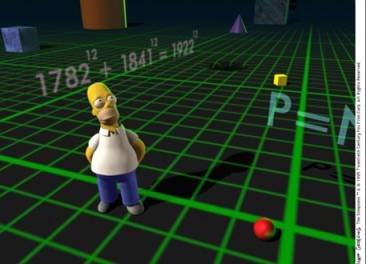Sanjoy Mahajan – Rote Learning Fragments the World
Posted by: Gary Ernest Davis on: March 2, 2011
I had the pleasure of interacting with Sanjoy many years ago at Rutgers, stuff New Brunswick, treat when he was doing research on Louis Benezet.
Sanjoy is a fabulous problem solver.
Near misses in Fermat’s last theorem
Posted by: Gary Ernest Davis on: March 2, 2011
 Fermat’s last theorem, proved by Andrew Wiles, states that there are no positive whole number solutions for
Fermat’s last theorem, proved by Andrew Wiles, states that there are no positive whole number solutions for to the equality
for
Yet in an episode of The Simpson’s it was noted that , apparently contradicting Fermat’s last theorem.
Of course this is not a contradiction because is not actually equal to
.
So why did The Simpson’s episode say these two numbers were equal?
Well,
while
So, starting from the left we see that the digit in
is a 9, while for
it is an 8.
David Radcliffe (@daveinstpaul ) tweeted:

